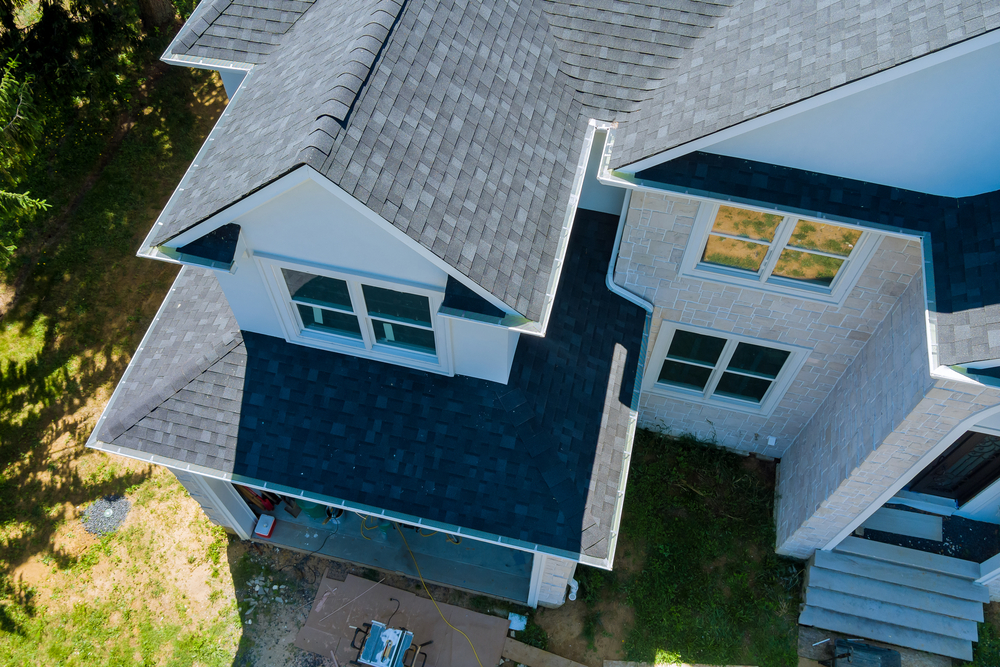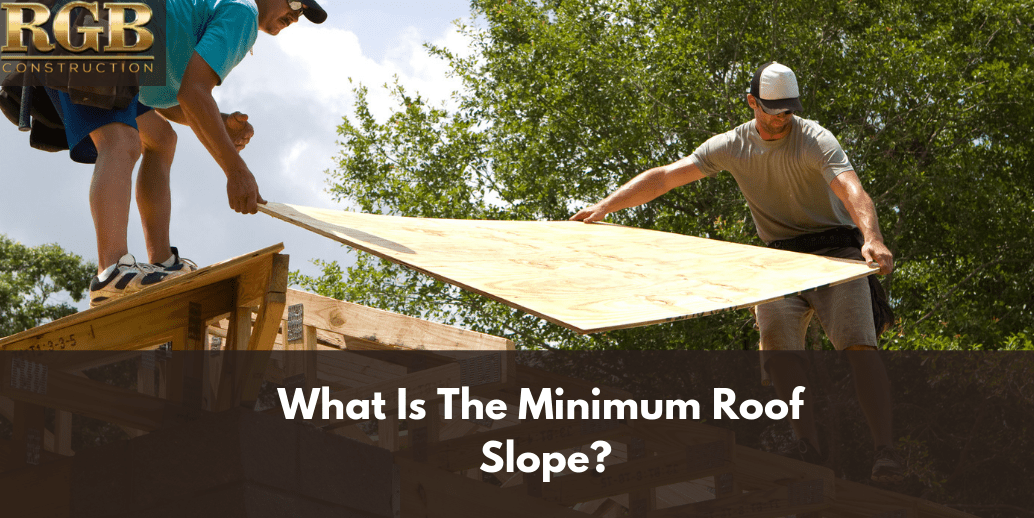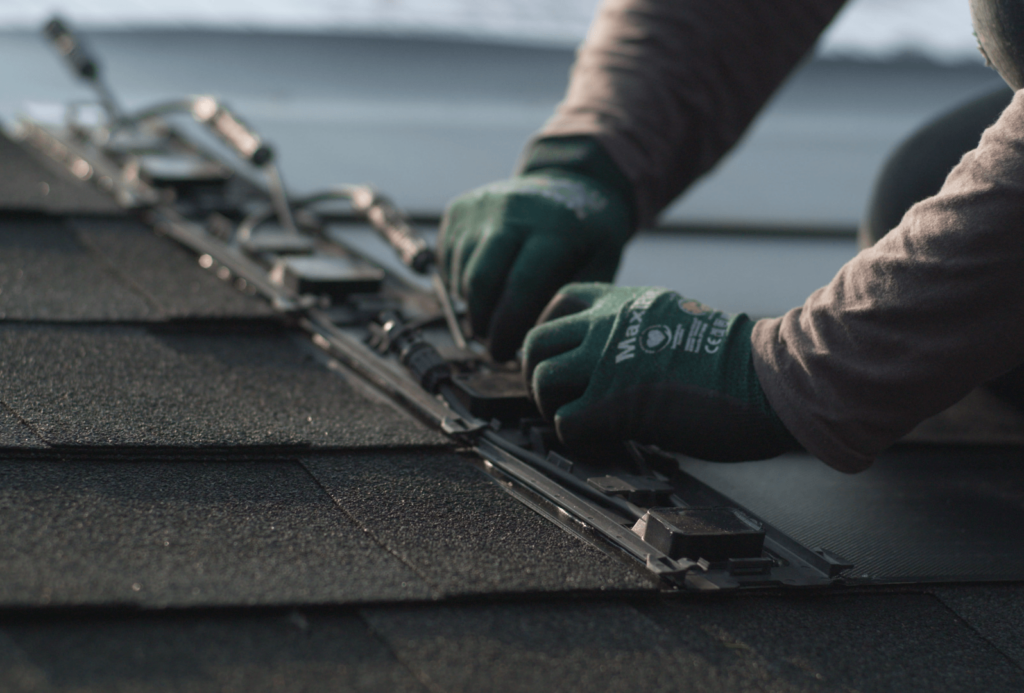When it comes to roofing, one important factor to consider is the roof slope. The minimum roof slope refers to the steepness or angle of a roof. It plays a crucial role in determining the overall functionality and longevity of a roof. In this article, we will explore the concept of the minimum roof slope, its significance, and how it relates to RGB Construction, one of the leading roofing companies in South Jersey. If you’re looking for reliable South Jersey roofers, understanding the minimum roof slope is essential.
No homeowner is unfamiliar with the basic concerns when it comes to a roof pitch. Slanted roofs are one of the reasons most people prefer to never be up on their roof to begin with, and outside some aesthetic choices, most homeowners tend, as a result, to think “the less pitch the better”.
This is sound, justifiable reasoning all things said, but there are minimum pitches that different types of roofs can have, without failing, coming apart, or failing to work properly overall. Today, we’re going to look at the different popular roofing materials, and point out their suggested minimum pitches.
Some of these pitches are in a ratio unit, not standard degrees. Don’t let these confuse you, as we’ll soon be talking about the conversion between this industry-specific measurement and more standard mathematical units.
Understanding Roof Slope: An Overview
Roof slope, also known as roof pitch, is the measure of how steep or flat a roof is. It is expressed as a ratio of the vertical rise to the horizontal run. For example, a 4:12 roof slope means that for every 12 units of horizontal distance, the roof rises 4 units vertically. Roof slope affects the drainage of water, the structural integrity of the roof, and the overall aesthetics of a building.
Why Pitch is Important
Roofs are pitched for the purpose of sloughing off water from rain and snow. Assisted by the gutters and downspouts, this prevents water from pooling up on top of the building, which would result in water damage, leaks, and other untold problems.
Flat roofs, which of course have no pitch per-se, have a special drainage system in place to account for this. The trick is, each material has an ideal minimum pitch, and there are other factors that can affect this as well.
The Importance of Roof Slope in Residential Roofing
The minimum roof slope is particularly important in residential roofing. It directly impacts the performance and durability of the roof. Here are some key reasons why roof slope matters:
Proper Water Drainage
Adequate roof slope ensures proper water drainage. When it rains or snows, water needs to flow off the roof efficiently to prevent pooling and potential leaks. A steeper roof slope allows water to quickly run off, reducing the risk of water damage to the structure and preventing the growth of mold and mildew.
Increased Roof Longevity
Roofs with a suitable slope tend to have a longer lifespan. Proper drainage prevents water from seeping into the roof’s layers, which can cause rotting, deterioration, and premature aging. By maintaining the correct roof slope, homeowners can extend the life of their roofs and avoid costly repairs or replacements.
Enhanced Energy Efficiency
Roof slope also affects energy efficiency. In regions with hot climates, a steeper slope helps in heat dissipation and improves airflow, reducing the workload on the HVAC system. Additionally, a higher roof slope allows for better insulation and ventilation, promoting energy conservation and lowering utility bills.
GAF Solar Shingles
GAF solar shingles are a type of roofing material that combines the functionality of solar panels with the durability and performance of asphalt shingles. They are designed to look like traditional asphalt shingles but have built-in solar cells that can generate electricity for your home. The minimum slope for GAF solar shingles is typically 3:12 (14 degrees). This slope is necessary to ensure proper water drainage and prevent water from pooling on the roof. If water is allowed to pool on the roof, it can cause damage to the shingles and the underlying structure of the roof. In addition to the minimum slope requirement, GAF solar shingles also require proper installation and maintenance to ensure their longevity and performance.
Metal Roofs
Metal roofs are a popular roofing option for many homeowners. They are durable, long-lasting, and come in a variety of styles and colors. The minimum slope for metal roofs is typically 3:12 (14 degrees). This slope is necessary to ensure proper water drainage and prevent water from pooling on the roof. If water is allowed to pool on the roof, it can cause damage to the metal panels and the underlying structure of the roof. In addition to the minimum slope requirement, metal roofs also require proper installation and maintenance to ensure their longevity and performance.
For metal, consult the manufacturer documentation, and if it’s not specified, go by these three in twelve guidelines.
Slate Roofs
Slate roofs are a premium roofing option that can last for over 100 years with proper installation and maintenance. They are made from natural slate stone and come in a variety of colors and textures. The minimum slope for slate roofs is typically 4:12 (18.5 degrees). This slope is necessary to ensure proper water drainage and prevent water from pooling on the roof. If water is allowed to pool on the roof, it can cause damage to the slate tiles and the underlying structure of the roof. In addition to the minimum slope requirement, slate roofs also require proper installation and maintenance to ensure their longevity and performance.
Tile Roofs
Tile roofs are a popular roofing option for many homeowners. They are durable, long-lasting, and come in a variety of styles and colors. The minimum slope for tile roofs is 2.5 inches per foot (2/12). This slope is necessary to ensure proper water drainage and prevent water from pooling on the roof. If water is allowed to pool on the roof, it can cause damage to the tiles and the underlying structure of the roof. In addition to the minimum slope requirement, tile roofs also require proper installation and maintenance to ensure their longevity and performance.
Asphalt Shingles
Asphalt shingles are one of the most popular roofing materials in the United States. They are affordable, easy to install, and come in a variety of colors and styles. The minimum slope for asphalt shingle roofs is traditionally considered to be 2:12 (9.5 degrees). This slope is necessary to ensure proper water drainage and prevent water from pooling on the roof. If water is allowed to pool on the roof, it can cause damage to the shingles and the underlying structure of the roof. In addition to the minimum slope requirement, asphalt shingle roofs also require proper installation and maintenance to ensure their longevity and performance.
Corrugated Metal
The minimum slope for a corrugated metal roof will vary depending on the purpose and design of the roof. Generally speaking, a roof should have at least a 2.5-inch per foot (2/12) slope for water runoff. If snow loads or strong winds are a concern in the area, then an even steeper slope may be necessary.
Factors Affecting the Minimum Roof Slope
Several factors influence the minimum roof slope required for a specific roofing system. RGB Construction takes these factors into account when determining the ideal slope for a customer’s roof. Some crucial considerations include the following:
- Climate: The amount of rainfall and snowfall in the region affects the necessary roof slope to ensure proper drainage.
- Roofing Material: Different roofing materials have specific slope requirements. For instance, shingles may have different recommendations compared to metal roofing.
- Building Codes: Local building codes and regulations may dictate the minimum roof slope allowed in a particular area.
- Roof Design: The architectural style and complexity of the roof design can influence the minimum slope necessary to maintain structural integrity and aesthetics.
RGB Construction: Expert Roofers in South Jersey
When it comes to roofing companies in South Jersey, RGB Construction stands out as a trusted and reliable choice. With years of experience and a team of skilled professionals, RGB Construction has built a solid reputation in the industry. They specialize in a wide range of roofing services, including installation, repairs, and maintenance. Whether you need a new roof or require assistance with an existing one, RGB Construction has the expertise to deliver outstanding results.
Common Misconceptions about Roof Slope
There are a few common misconceptions about roof slope that are worth addressing. Let’s debunk some of these myths:
-
Myth: Flat Roofs Are Easier to Maintain
Contrary to popular belief, flat roofs require regular maintenance and proper drainage systems to prevent water accumulation. Without sufficient slope, flat roofs can be prone to leaks and other issues.
-
Myth: Steeper Roofs Are Always Better
While steeper roofs generally offer better water drainage, they may not be suitable for all architectural styles or climates. It’s essential to strike a balance between functionality and aesthetics when determining the roof slope.
-
Myth: Roof Slope Doesn’t Affect Energy Efficiency
Roof slope plays a significant role in energy efficiency. It helps with proper insulation, ventilation, and heat dissipation, leading to improved energy conservation and reduced cooling costs.

Frequently Asked Questions (FAQs)
1. What is the minimum roof slope recommended for asphalt shingles?
The minimum roof slope for asphalt shingles is typically 2:12. However, it’s crucial to consult with roofing professionals like RGB Construction to ensure that the slope meets local building codes and manufacturer specifications.
2. Can I install metal roofing on a low-slope roof?
Yes, metal roofing can be installed on low-slope roofs. However, the specific slope requirements may vary depending on the type of metal roofing system chosen. RGB Construction can provide detailed guidance on the appropriate slope for your metal roof.
3. Does a higher roof slope increase the cost of installation?
In general, a higher roof slope may increase the cost of installation due to additional materials and labor required. However, it’s essential to consider the long-term benefits and potential savings in terms of roof longevity and energy efficiency.
4. Are there any limitations on roof slope dictated by local building codes?
Yes, local building codes often specify the minimum and maximum roof slopes allowed in a particular area. RGB Construction stays updated with the latest building codes and ensures compliance during roof installations or repairs.
5. How often should I have my roof slope inspected?
It is recommended to have your roof slope inspected during regular roof maintenance visits or whenever you suspect any issues. RGB Construction offers comprehensive roof inspections to identify and address any slope-related concerns.
6. Can I change the slope of my existing roof?
Changing the slope of an existing roof is a complex and expensive process. It often involves significant structural modifications. It’s best to consult with roofing professionals like RGB Construction to assess the feasibility and cost-effectiveness of such changes.
Conclusion
The minimum roof slope is a crucial consideration for any homeowner in South Jersey looking to ensure a durable and efficient roofing system. RGB Construction, one of the top roofing companies in the area, understands the significance of roof slope and its impact on the overall functionality and longevity of a roof. By relying on their expertise, homeowners can make informed decisions about the ideal roof slope for their properties. With RGB Construction’s commitment to quality and customer satisfaction, you can trust them to deliver exceptional roofing solutions tailored to your specific needs.
As we see, it can vary widely from one roof type to another, and it depends on a great many factors unique to a given case. To get input on the slope you need for your roof and your material, fill out our contact form or call us today for a no-obligation consultation!









